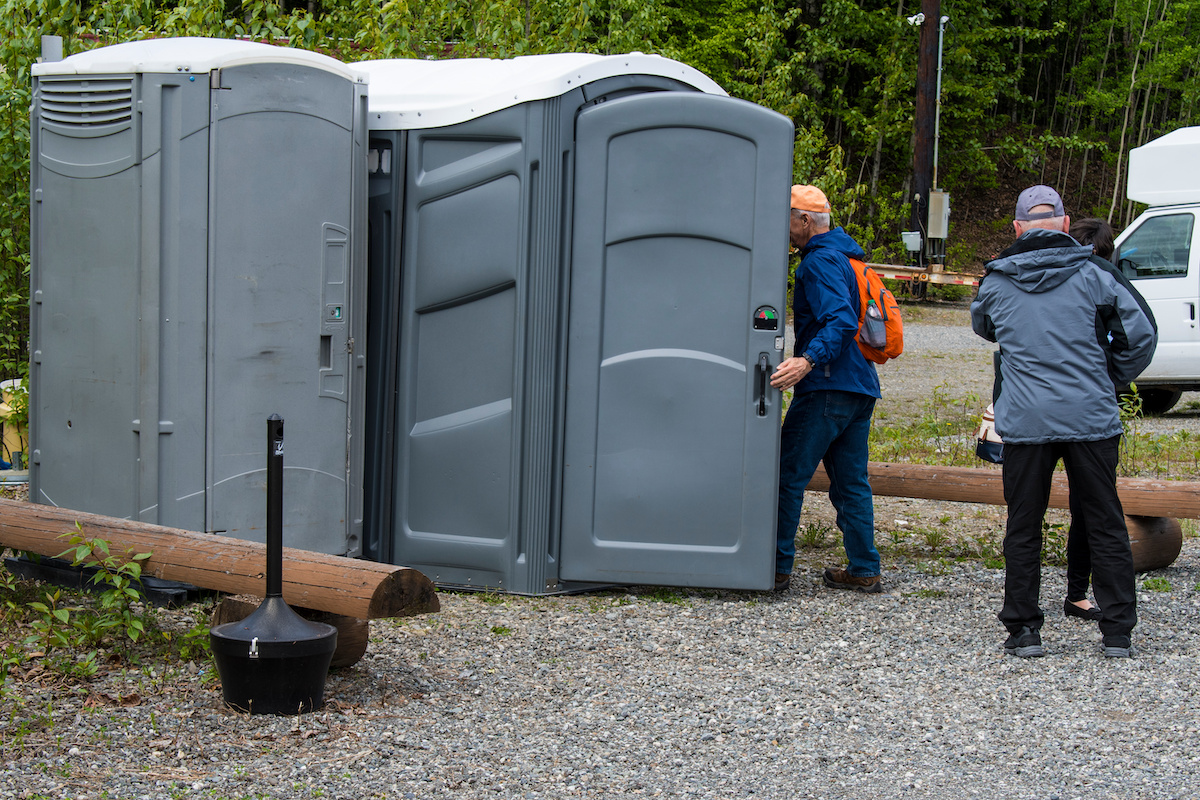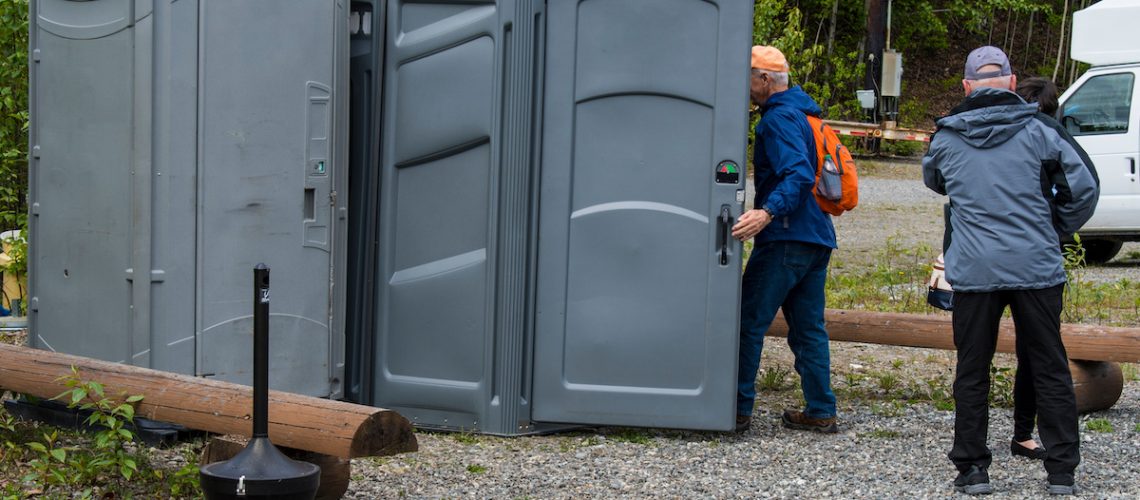Portable restrooms have long been associated with large events, construction sites, outdoor festivals, and emergency response scenarios. For many, the mere mention of a porta potty evokes thoughts of questionable cleanliness. However, that perception is often based on rare cases of neglect or improper servicing, not on the standard practice of professional portable sanitation services.
In reality, portable restroom units can be exceptionally sanitary when properly maintained, stocked, and cleaned. With scheduled servicing, modern materials, and strict industry regulations, the cleanliness of these units often exceeds public expectations. This article clears up the misconceptions and explains why portable restrooms are safe, sanitary, and practical when handled correctly.
What Determines Sanitation in a Portable Restroom?
Several key factors dictate the overall cleanliness and safety of a portable restroom. These elements work together to ensure that each unit remains clean, odor-free, and ready for use.

1. Frequency and Quality of Servicing
The most important determinant of sanitation is how often the unit is cleaned and restocked. Professional sanitation companies offer customizable service schedules depending on use. A restroom at a weekend festival might require daily attention, while a construction site may need multiple cleanings per week.
Each servicing includes:
- Pumping out waste from the holding tank
- Refilling deodorizing and disinfecting chemicals
- Restocking toilet paper and hand sanitizer
- Wiping down all surfaces with antibacterial cleaners
- Pressure washing or scrubbing the unit interior
A properly serviced unit will not have lingering odors, overflowing tanks, or unsanitary conditions.
2. Type of Chemicals Used
The blue liquid inside the tank is more than just a visual indicator. It contains powerful biocides and deodorizers that break down waste and prevent the spread of bacteria. These solutions are specifically formulated to:
- Control odor-producing bacteria
- Reduce solid buildup
- Prevent insect activity
- Extend the usable life of the tank contents
This chemical mixture is refreshed during every service, making it a critical component of overall hygiene.
3. Hand Sanitizer and Hand Wash Stations
Most modern portable restrooms come equipped with either an internal hand sanitizer dispenser or an external hand wash station. For high-traffic areas or food-service locations, additional hand-washing sinks with soap and running water are often required by regulation.
Providing hygiene options:
- Reduces germ transfer
- Encourages proper hand hygiene after use
- Increases user satisfaction and safety
Units that include hand-washing facilities are especially important at events or job sites where food is present.
4. Materials and Unit Construction
Portable restrooms are designed with durability and cleanliness in mind. The smooth, non-porous plastic used for the walls, floor, and toilet seat is easy to clean and resistant to bacteria buildup. Ventilation systems help keep airflow consistent, minimizing odor retention. Rounded edges, molded corners, and absence of crevices eliminate areas where waste or grime could hide.
Many units also have anti-slip flooring and sealed tanks to prevent leaks or ground contamination.

Regulation and Oversight in the Portable Sanitation Industry
There are strict regulations that guide how portable restroom services operate. In the United States, organizations like the Portable Sanitation Association International (PSAI) and OSHA (Occupational Safety and Health Administration) set best practices for the industry.
OSHA Guidelines
For job sites, OSHA mandates:
- One toilet for every 10 workers during a 40-hour week
- Regular servicing to ensure sanitary conditions
- Availability of hand washing or sanitizing equipment
Noncompliance can result in fines and work stoppages. These rules ensure workers have access to safe and clean restrooms throughout the job’s duration.
Local Health Department Codes
In most jurisdictions, portable sanitation is also subject to local or state health codes. These may outline:
- Waste disposal methods
- Required cleaning intervals
- Use of certified chemicals
- Number of units based on event size or site capacity
Reputable rental companies stay updated on all regulatory requirements and adjust their service plans to remain compliant.
Common Misconceptions About Porta Potties
Public perception doesn’t always reflect reality. Many concerns stem from isolated bad experiences or poor maintenance by unlicensed providers. Here’s a look at some common myths and the truth behind them.
Misconception: “They Always Smell Bad”
This is the most common complaint, and it’s usually avoidable. A well-maintained unit will not smell. Servicing, chemical replenishment, and proper ventilation make a huge difference. If a unit does have an odor, it likely hasn’t been serviced recently or was overwhelmed by excessive use without an updated schedule.
Misconception: “They’re Full of Germs”
Portable restrooms are no more prone to bacteria than any other public restroom. In fact, when maintained properly, they may be cleaner than a gas station or stadium bathroom. The difference lies in cleaning frequency and usage volume. Professional services use hospital-grade disinfectants and clean every surface, not just the toilet.
Misconception: “They’re Unsafe for Kids or Families”
Many events rent ADA-compliant or family-sized portable units with extra space, lower seats, and even baby-changing stations. These units are just as clean as standard ones and offer features specifically designed for family-friendly use.
Specialized Portable Restroom Options
Sanitary expectations have pushed the portable restroom industry to diversify its offerings. Today, there’s a broad range of options depending on your needs and environment.
Luxury Restroom Trailers
For weddings, corporate events, and high-end outdoor functions, luxury restroom trailers are a popular solution. These units feature:
- Flushing toilets
- Sinks with running water
- Climate control
- Interior lighting
- Mirror and vanity spaces
They are serviced just as often as standard units and offer the comfort of an indoor restroom.

ADA-Accessible Units
Designed for individuals with disabilities, these units include handrails, low thresholds, and ample space for wheelchair maneuvering. Sanitation practices for these units are identical to other models, ensuring equal cleanliness for all users.
High-Capacity Units
Large construction sites or long-term industrial projects may use high-capacity units that can serve more users between service intervals. They are designed with larger tanks, reinforced structures, and extra ventilation. Even though they can go longer between pump-outs, regular service is still critical to maintaining hygiene.
When a Portable Restroom Isn’t Sanitary
A portable unit only becomes unsanitary when servicing falls behind, the unit is damaged, or regulations are ignored. Problems typically arise when:
- Units are overused without adjusting the service frequency
- Unauthorized providers skip essential maintenance steps
- There is damage to the tank, seals, or ventilation
- Waste is not disposed of properly
These issues are rare when working with licensed, insured, and experienced sanitation providers.
What to Look for When Renting a Sanitary Portable Restroom
If you are renting portable restrooms for an event, job site, or temporary need, there are a few signs of a provider committed to sanitation.
- Transparent servicing schedule with documentation
- Properly stocked hand hygiene options
- Good reviews and testimonials
- Equipment that looks clean, undamaged, and modern
- Ability to adjust servicing based on usage or event changes
Before signing a contract, ask providers what disinfectants they use, how they track servicing, and what backup plans they have in case of damage or overflow. Reputable companies will have clear answers and contingency plans.
Comparing Portable Restrooms to Other Temporary Facilities
In many ways, a portable restroom that is professionally maintained may be more sanitary than a temporary indoor restroom. Event venues that set up mobile facilities inside tents or trailers often lack the easy cleaning access of molded plastic interiors and chemical tanks. They may also rely on septic solutions that require costly pumping or offer fewer cleanings.
Outdoor units have the advantage of:
- Easy access for cleaning crews
- Self-contained waste management
- Built-in ventilation
- Minimal shared touchpoints
For temporary needs, especially in remote areas or at high-traffic sites, portable restrooms are among the most hygienic options available when serviced properly.
The Reality of Modern Portable Sanitation
The idea that portable restrooms are inherently dirty is outdated. In practice, sanitation levels depend entirely on the quality of the equipment and how consistently the unit is maintained. Companies that invest in staff training, high-quality materials, and detailed service logs consistently deliver clean, comfortable experiences to users.
From weddings to disaster relief zones, the expectations placed on portable restrooms have grown, and the industry has stepped up. Cleanliness is no longer a luxury – it’s a standard, and one that professional providers meet without exception.

Choose Cleanliness With Confidence
Portable restrooms today are far from what they used to be. When you partner with a company that takes cleanliness seriously, you’re getting a sanitary solution that rivals traditional restrooms in both safety and comfort. The key is consistent servicing, quality materials, and professional oversight.
At MCS Portable Restrooms, we set the gold standard in portable sanitation. Whether you’re managing a busy construction site or planning a high-profile event, we provide clean, reliable units across Colorado Springs, CO and Upstate South Carolina. Our team handles everything from delivery to servicing so you can focus on the job, not the facilities.
If you need portable restrooms that stay clean, fresh, and fully stocked, contact MCS Portable Restrooms today. Let us show you why we’re trusted throughout the region to deliver nothing less than exceptional sanitation.


